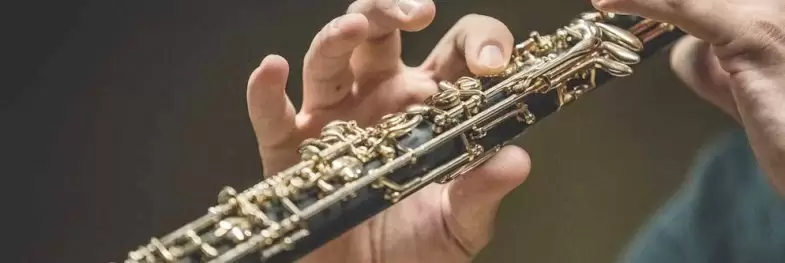When it comes time to purchase an oboe, upgrade from your student model, or just find a back-up for your main instrument, buying a brand new oboe may not be financially feasible. We certainly understand the constraints attached to purchasing an instrument and we are proud to offer a wide selection of used oboes in all levels and price ranges to fit your needs. While similar to trying brand new instruments, the process of trying used oboes is going to be different and there are a few things to consider a long the way. Hopefully these pointers will help you as you start the venture of finding a used oboe!
Condition
This is probably by far the most important thing to consider when looking at used instruments. No matter where you're looking at instruments, whether it's from us at MMI, other vendors, craigslist or ebay, the age and the condition of the instrument should be well documented. Any seller should list as much information about the instrument as possible and should disclose important facts about maintenance and work that has been done; especially regarding cracks on wood oboes. If you see an instrument that looks to good to be true, 9 out of 10 time it will be. Always inquire about the history and details of an instrument you're considering trying. The condition of the case is also something to consider. Older and damaged cases can cause damage to the instrument in numerous ways. Most used instrument that become available for sale should have a case that is in good condition that will protect it. Be suspect of any instrument which arrives to you in a case that is too old or worn to provide sufficient protection.
Cracking
As we all know, cracking is a common occurrence in the oboe world. Just because an oboe is cracked does not make the instrument a bad instrument. If there repair work is well documented and is done by a reputable oboe repair person, then most cracks will not be an issue. If you have an instrument that needs repair, please keep our instrument repair specialists in mind.
Age
Depending on the make and model of the instrument, age can certainly play an important role. Older oboes will always show their age, no matter how well-kept they may have been by their previous owners. Some wear and tear on older instruments is usually expected and should not limit their playability. This sort of 'aging' will be reflected on the keywork and mechanisms which is mostly key tarnishing. This isn't uncommon and usually is not significant but re-plating the silver can be an option in extreme cases.
Scale
This goes for new and used instruments. You want to have an instrument with an even scale, which means that no notes stick out more than others or shows any instability throughout all ranges of the instrument. Older wood oboes will show more changes as wood changes with time and environment as well as how often the instrument was or wasn't played. Resin instruments will show less of these inconsistencies as resin won't change over time but if there are issues with the scale it could be from an inherent flaw in that particular instrument. The best way to test the the scale is to slowly play from the bottom of the range to the top of the range of the instrument with a tuner and check each note as you pass by. There should be an even transition from note to note and should not require embouchure compensation to correct any issues.
We can help
Just like with purchasing a new instrument, finding the right used instrument can be a daunting task. Use the resources around you to help find the instrument that will be the right fit for you. Steven and Jeff are always in the shop for a consult if you have any questions as well as checking with a private lesson teacher or instructor or even an oboist in your area that can provide some information. All of these outlets combined should help you navigate through new and used instruments! If you'd like help finding a used oboe, please call us at (800) 926-5587 or contact us.

